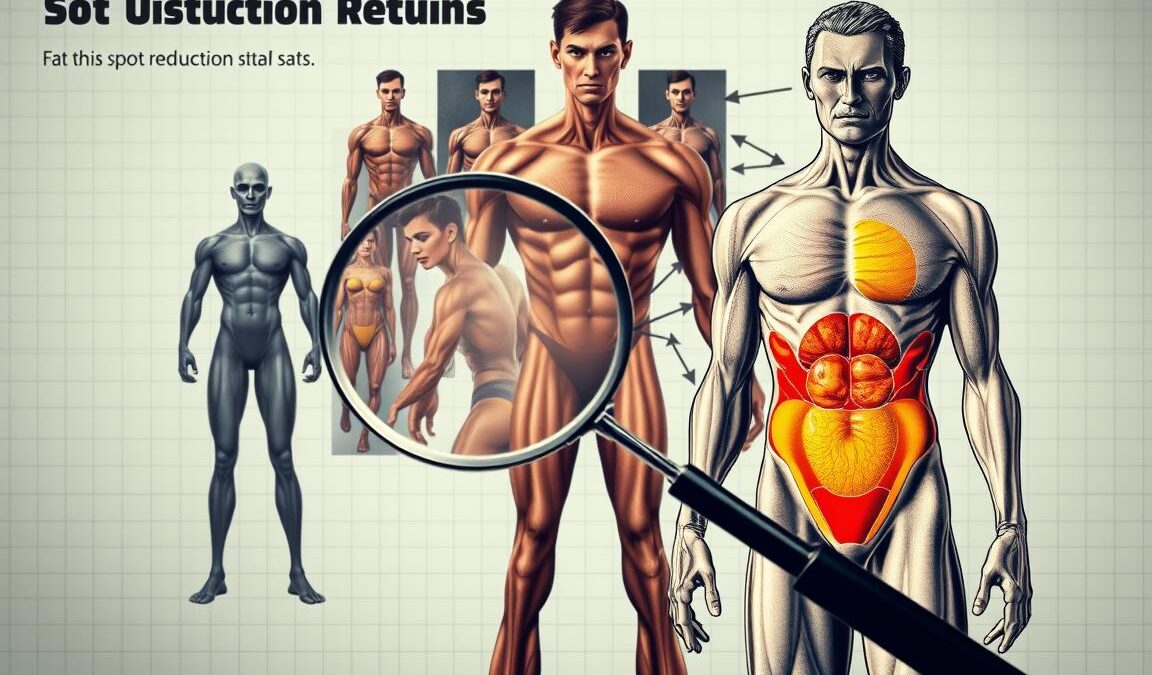
Kettlebell Swing Lower Back Pain: My Relief Tips
A kettlebell swing lower back pain is very common and I’ve been there too, and I know how frustrating it can be.
Did you know that over 80% of people experience back pain at some point in their lives?
If you’ve ever felt that sharp twinge in your lower back after a kettlebell workout, you’re not alone.
kettlebell swing lower
But here’s the good news: with the right approach, you can enjoy kettlebell workouts without the worry of back pain.
Let me share some personal tips that have helped me find relief and prevent injury.
First things first: understanding the mechanics of kettlebell swings is key to avoiding injury. It’s all about balancing the power of these exercises with mindful practices that protect your back. Over time, I’ve learned the importance of really listening to my body and adjusting my workouts to fit my strengths and limitations.
In this guide, I’ll share actionable insights that can help you manage and prevent back pain from kettlebells so you can keep your fitness journey both effective and pain-free.
Understanding Kettlebell Swing Mechanics
The kettlebell swing is a powerful, dynamic movement that’s accessible to everyone—from beginners to seasoned athletes. When done right, it can significantly boost your strength, cardio, and overall fitness.
To help you get the most out of your workouts, let’s break down the key aspects of kettlebell technique.
The Basics of the Kettlebell Swing
The first step to mastering kettlebell swings is nailing down the swing mechanics. This movement is all about the hip hinge, which is where your power comes from.
Start by standing with your feet shoulder-width apart, gripping the kettlebell with both hands. Focus on hinging at your hips—push your butt back while keeping your spine neutral.
As you thrust your hips forward, let that momentum drive the kettlebell up to chest height. Remember, it’s your hips doing the work, not your arms. And don’t forget to breathe—exhale sharply at the top of the swing to really engage your core.
Common Mistakes During the Swing
Even though the kettlebell swing seems simple, poor form can lead to ineffective workouts and potential injuries.
A common mistake is overextending your back, which can put unnecessary strain on your lower back muscles.
To avoid this, focus on keeping a neutral spine and let your hips control the movement. Another error is relying too much on arm strength instead of letting the momentum do the work.
Remember, your shoulders and arms should be guiding the kettlebell, not lifting it. By correcting these mistakes, you’ll make sure your kettlebell swings are both safe and effective.
Why Kettlebell Swings Cause Lower Back Pain

Kettlebell swings are a great addition to strength training, but they can sometimes lead to discomfort, especially in the lower back. Understanding the main causes of this pain is the first step toward preventing it and keeping your workouts pain-free.
Poor Form and Technique
One of the main reasons people get injured during kettlebell swings is poor form. If you’re not engaging your core or distributing your weight correctly, it can put a lot of unnecessary stress on your lower back. To prevent this, focus on keeping a neutral spine and actively engaging your core throughout the movement.
Also, be mindful of the kettlebell weight you’re using—going too heavy too soon can make it harder to maintain proper form.
Muscle Imbalances and Weakness
Muscle imbalances and general weakness are big contributors to back pain during kettlebell swings. If your core and glutes aren’t strong enough, your lower back ends up taking on more of the load than it should.
To counter this, it’s important to include strength training that specifically targets these areas, helping to balance your body’s muscles and reduce the risk of pain. Physiotherapists often emphasize that correcting these imbalances can make your workouts more effective and pain-free.
Here’s a quick comparison of common back pain causes related to kettlebell swings:
| Factor | Description |
|---|---|
| Poor Form | Includes improper spine alignment and lack of core engagement. |
| Muscle Imbalance | Weak core and glutes force the lower back to overcompensate. |
| Improper Weight | Using a kettlebell that’s too heavy can break form and cause injury. |
My Personal Lower Back Pain Relief Tips
When it comes to preventing and easing lower back pain from kettlebell swings, I’ve got a few tried-and-true tips that have really worked for me. These include doing thorough warm-ups, focusing on core exercises to build strength, and making time for effective post-workout stretches to improve flexibility. Here’s what has helped me the most:
Warm-up Exercises
Warming up before any workout is essential for preventing back pain. I always start with a few go-to routines that target the muscles I’ll be using. I begin with arm circles to loosen up my shoulders, then move into leg swings to activate my hips.
After that, I add back extensions and bodyweight squats to get my whole body ready for the kettlebell swings.
Core Strengthening Routines
Strengthening your core is key to staying stable and keeping back pain at bay. In my routine, I focus on exercises like planks, Russian twists, and bird dogs. These are great for building a strong foundation, which helps take the strain off your lower back during kettlebell workouts. I usually aim for three sets of each exercise, holding or performing them for 30 seconds to a minute per set.
Post-Workout Stretching

Using Proper Form to Prevent Lower Back Pain
To prevent lower back pain during kettlebell swings, proper form is crucial. Pay close attention to keeping your spine aligned, mastering the hip hinge movement, and engaging your core. These steps can greatly reduce your risk of injury and keep your workouts safe and effective.
Techniques to Maintain a Neutral Spine
Keeping a neutral spine is key to protecting your lower back and ensuring proper alignment. Throughout the movement, make sure your back stays flat and your chest remains up. Avoid rounding your shoulders forward or arching your back too much.
- Stand with feet shoulder-width apart.
- Engage your core to support spinal alignment.
- Keep your head in line with your spine.
Importance of Hip Hinge
The hip hinge is crucial for a proper kettlebell swing. Instead of squatting, focus on hinging at your hips to start the movement. This technique helps you generate power from your glutes and hamstrings, reducing strain on your lower back.
- Push your hips back while keeping your knees slightly bent.
- Maintain a flat back with your shoulders down and back.
- Drive through your heels to extend your hips and swing the kettlebell upwards.
Engaging the Core Correctly
Engaging your core is essential for stability and supporting your lower back during kettlebell swings. A strong core helps distribute the load more evenly and boosts injury prevention.
- Brace your abdominal muscles as if preparing for a punch.
- Engage the muscles around your spine to maintain stability.
- Focus on controlled breathing to keep your core engaged throughout the movement.
Proper Form Benefits
| Benefit | How Proper Form Helps |
|---|---|
| Spinal Alignment | Prevents lower back strain by maintaining a neutral spine. |
| Hip Hinge Movement | Generates power from glutes and hamstrings, reducing back load. |
| Core Engagement | Provides stability and supports lower back during swings. |
| Injury Prevention | Reduces the risk of back injuries by using correct form. |
Choosing the Right Kettlebell Weight

When choosing the right kettlebell weight, start by considering your fitness level and experience. Begin with a lighter weight to perfect your technique, and gradually move to heavier kettlebells as your strength grows.
It’s important to follow the principle of progressive overload—this means gradually increasing the weight over time to keep challenging your muscles.
Make sure your gear allows for these incremental increases to prevent injuries and build strength effectively.
For personalized advice on selecting the right weight, consult certified trainers.
Their expertise can guide you in choosing the best kettlebell for your needs and help you progress safely in your strength training journey.
- Beginners: Start with a light kettlebell to learn proper form.
- Intermediate users: Gradually increase the weight to build strength steadily.
- Advanced users: Use heavier kettlebells to further challenge your muscles, ensuring correct technique at all times.
When to Seek Professional Help
Dealing with lower back pain can be really frustrating, especially if it sticks around or gets worse. It’s important to know when to seek professional help. If your pain is persistent or worsening, don’t ignore it.
If you’re having trouble moving or feel discomfort during everyday activities, it’s a good idea to consult a specialist. A fitness expert can help you fine-tune your form to avoid further injury, while a professional health assessment can identify the root cause of your pain.
If the pain continues, physical therapy might be the next step. A physical therapist can create a customized treatment plan to help you recover safely and effectively. Don’t hesitate to seek this kind of help if your condition doesn’t improve.
Here’s a quick guide to knowing when to seek professional help:
- Persistent or worsening pain
- Limited mobility
- Pain during routine activities
- Difficulty performing exercises despite form correction
Consulting professionals can really make a difference. A fitness expert or physical therapist can offer the support and care you need. Remember, your well-being is a priority, and getting professional guidance is crucial for effective back pain treatment.
| Signs | Recommended Action |
|---|---|
| Persistent pain | Consult a physical therapist |
| Limited mobility | Undergo professional health assessment |
| Pain during activities | Seek fitness expert advice |
Integrating Kettlebell Swings into Your Workout Safely
Incorporating kettlebell swings into your workout safely is essential for a well-rounded fitness routine. I’ve found that variety and balance are crucial to avoiding overuse injuries. Mixing kettlebell swings with other exercises helps create a balanced plan that strengthens all muscle groups.
When planning your workouts, don’t forget the importance of rest days. Giving your body enough recovery time prevents fatigue and supports long-term fitness progress. On rest days, I usually do lighter activities or stretching to keep moving without overexerting myself.
Getting advice from fitness professionals can offer personalized guidance for building a sustainable workout routine. Many trainers suggest starting with lighter weights and gradually increasing as your form and strength improve. This approach helps ensure safety and proper technique.
Remember, the key to a balanced training plan is to listen to your body. Pay attention to how different exercises affect you and adjust as needed. By following these tips, you can safely integrate kettlebell swings and enjoy a comprehensive, injury-free fitness experience.



